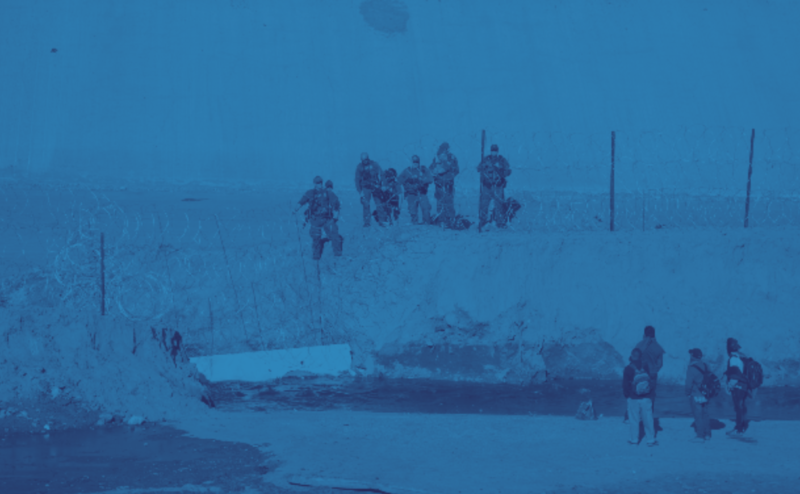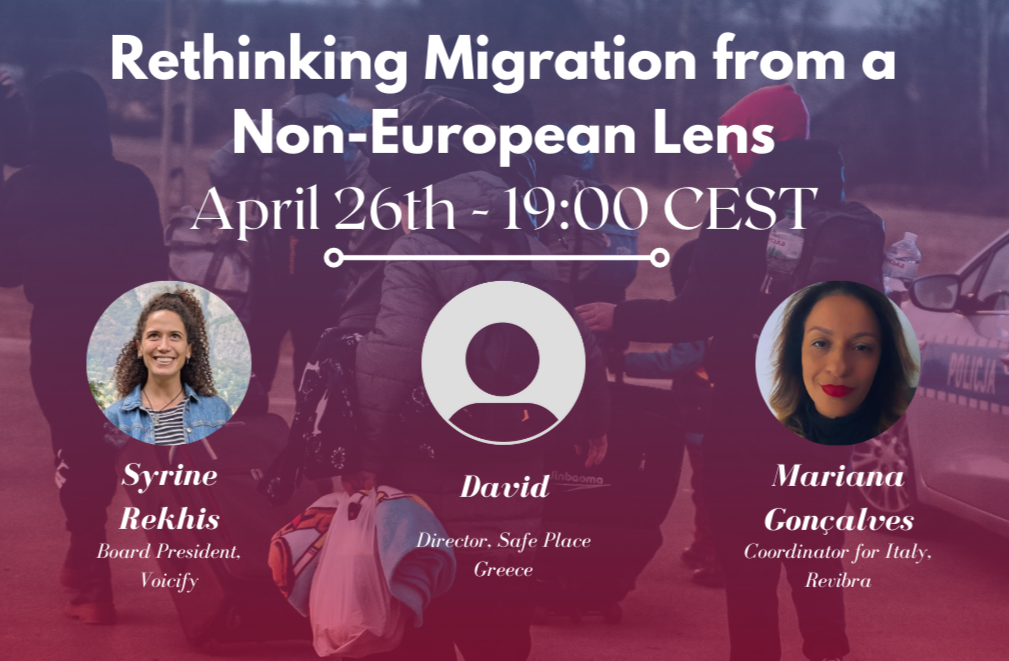
Written by Silvia Talavera, Working Group on Migration
Introduction
At the end of 2020, the number of pending asylum applications in the EU member states was 765,700, lower than at the end of 2019, 928,900 (Eurostat, 2021). Although this decline is probably related to the global pandemic, border closures and limitations on interstate mobility, the number of pending applications remains relatively high, showing that nationals are still forced to flee their countries of origin.
Germany, France, Spain, Greece, and Italy were the countries with the highest number of completed and pending applications (Eurostat, 2021). The distribution of asylum seekers across EU countries depends on several factors. Firstly, it is important to consider that the Dublin Convention obliges EU border states to take responsibility for processing asylum applications (Regulation 604/2013). This duty puts enormous pressure on Mediterranean countries such as Greece and Italy, or countries along the Balkan route, such as Bulgaria, Croatia, or Slovenia. Although the New Pact on Migration and Asylum calls for solidarity from other countries to share the burden, this solidarity is voluntary and there is no incentive for other countries to take in asylum seekers. On the other hand, there is a higher influx of applications in those countries with better socio-economic policies for asylum seekers and refugees, such as Germany and Sweden.
The question arises as to whether application procedures are efficient and human rights are respected throughout the entire process, which will be discussed in this article.
How different is the experience of asylum seekers in each member state?
Ideally, Directive 2013/32/EU (2013) requires Member States to register asylum seeking applications “no later than three working days after the application is made” (article 6.1), as well as to complete the examination procedure “within six months of the lodging of the application” (article 31.3). This time limit may be extended in a series of circumstances: (i) if “complex issues of fact and/or law are involved”, if there are too many applications or the applicant is in breach of any of his/her obligations, it may be extended to 9 months; (ii) where necessary to ensure a proper and full examination of the application for international protection, it may be extended to 12 months; (iii) as an exception, it may be extended up to a maximum of 21 months. These deadlines are not really respected in practice and the process may take much longer than expected (ECRE, 2021).
As one of the Member States that approves the fewest asylum applications, Hungary received 468 applications in 2019, mostly from Afghans and Iraqis, of which only 39 were accepted (ECRE, 2019). On 17 December 2020, the Grand Chamber of the CJEU found that Hungary had infringed EU law on international protection and return procedures for illegally staying third-country nationals between 2015 and 2019 (European Court of Justice, 2020). Third-country nationals were forced to stay for months at the border between Serbia and Hungary because Hungarian law only allowed them to apply for asylum in the transit zone and daily applications were limited. The Hungarian Helsinki Committee (HHC) denounced on several occasions that illegal detentions lasted almost two years and that some individuals were deprived of food for 1 to 8 days by the Hungarian authorities (The Hungarian Helsinki Committee, 2020).
This situation seems to continue and even to have worsened after the pandemic. In May 2020, asylum applications could only be submitted after approval of a declaration of intent by the asylum authority at the Hungarian embassy in Kiev or Belgrade (ECRE, 2020c). It is therefore clear that anyone who arrives at the border with Hungary, enters Hungary illegally, or stays legally in Hungary and does not belong to the three categories mentioned above, cannot apply for asylum in Hungary.
On the other hand, Germany is the country that receives and approves the most asylum applications in the EU. In 2019, applicants waited 6.1 months on average, but the longest average period was 10.7 months in 2017 (ECRE, 2020b). This was partly explained by the number of applications pending at the beginning of that year. However, ProAsyl, a pro-immigration advocacy organization, indicated in 2016 that Somali applicants waited on average 21.9 months before receiving a first instance decision (Pro Asyl, 2016). This leads to the question of whether there is any discrimination in terms of asylum seekers’ nationality.
It can be noted that in some countries, prioritising nationalities can cause serious disadvantages for applicants. For example, in Cyprus, the first instance procedure has often taken 2 to 3 years for non-priority nationalities (ECRE, 2020a). The most prevalent nationalities are Syrians and Afghans, with the former being the most likely to have their application accepted. As for Afghans, the protection rate ranges from 93.8% in Italy to 4.1% in Bulgaria (NGO Joint Statement, 2020).
The European Union and Afghanistan signed the EU-Afghanistan Joint Way Forward Pact in 2016, which required Afghanistan to accept returnees, including unaccompanied minors, in exchange for economic aid, until 2020. In 2021 this Pact was renewed, facilitating the deportation of people to Afghanistan (ECRE, 2021), the world’s least peaceful country in 2019 and 2020 (Institute for Economics and Peace, 2019, 2020). Following the Taliban takeover, the European Parliament issued a resolution on the 16th of September, urging the EU to conclude and implement the New Pact on Asylum and Migration (European Parliament, 2021). It also called on member states to reassess current and recent asylum applications, including rejected applications, in the light of recent developments and banned forced returns to Afghanistan under any circumstances.
What is the impact of lengthy procedures on fundamental rights?
From a legal point of view, both the difficulties to access the application process and the excessively lengthy procedures constitute a barrier to the exercise of fundamental rights. These rights are, among others, the right to good administration and to a fair hearing within a reasonable time, as well as the right to asylum and an effective remedy (EU Charter of Fundamental Rights, 2019). In Spain, application registrations will begin with a personal interview at the Office of Asylum and Refuge in any Aliens Office, in authorized Police Stations, Detention Centres for Foreigners (CIE), Spanish Embassies or Consulates. The average waiting time for this interview was 6 months in 2019. In some Spanish provinces, waiting times could be as long as one year (Spanish Ombudsman, 2019). Not only that but it has also been recorded that those interviews are sometimes conducted in groups, in violation of each applicant’s right to legal assistance and without adequate translation assistance (Spanish Ombudsman, 2021).
Another problematic issue is the normalisation of long-term immigration detention, although various Council of Europe, UN, and EU bodies have stressed that immigration detention should always be an exceptional measure of last resort (Council of Europe, 2017). During this waiting period, asylum seekers find themselves in a legal and social limbo in which their lives are essentially on hold, in fear of deportation. This practice in itself is not necessarily illegal, but it is worrying that asylum seekers’ rights may be severely undermined in detention facilities. As an example of this, the European Court of Human Rights has stated on several occasions that the living conditions of asylum seekers in Greece are antithetical to the respect for human dignity and therefore in violation of article 3 of the European Convention on Human Rights (European Court of Human Rights, 2009, 2010, 2011).
The human and social consequences, as well as the mental health issues caused in the short and long term, are also a matter of concern. A study by psychologist Martina Heeren and her co-authors in Switzerland indicated a higher propensity for PTSD (Posttraumatic Stress Disorder) among asylum seekers whose applications were still being processed. Furthermore, the rate of depression among those awaiting an asylum decision was almost double that of recognised refugees (Heeren, M. et al, 2014). These mental problems could even be considered a hindrance to the submission of their claims in a coherent way, causing them to lose some of their credibility (Naranjo, R., 2018).
Children’s rights are also at risk during this process, and it is especially concerning when these minors are unaccompanied. Adolescents approaching the age of majority are in a state of uncertainty, as they may have turned eighteen along the way, or may not even know their exact age. Since their testimony alone is not absolute proof of their age, they will have to undergo an age assessment procedure, which may consist of a physical examination and observation of sexual maturation, dental observation, imaging of bones or teeth, or a combination of these. However, the complexity of these tests further delays the procedure and may even put children at risk of homelessness, as Amnesty International Spain has denounced (Amnesty International Spain, 2021).
Conclusions
As we have seen throughout this article, there is still a long way to go for all Member States to implement procedures that respect asylum seekers’ human rights.
Lengthy procedures and detention times, slow bureaucracy, and administrative burdens are just some of the difficulties asylum seekers face. Citizens and civil associations should continue monitoring states and denouncing abusive practices since asylum seekers are often voiceless when it comes to reporting violations of their rights.
Migratory processes have accompanied humanity throughout its history, and it is foreseeable that situations that force people to leave their homes will continue to occur. EU member states must prepare and act together, in accordance with European values and using a “human rights approach”, bearing in mind that there may be many more displaced people in the future as a result of new conflicts or climate change.
References
Amnesty International Spain. (October 19, 2021,) Canarias: Más de mil menores no acompañados en riesgo de acabar viviendo en la calle en un limbo sin derechos. https://www.es.amnesty.org/en-que-estamos/noticias/noticia/articulo/canarias-mas-de-mil-menores-no-acompanados-en-riesgo-de-acabar-viviendo-en-la-calle-en-un-limbo-sin-derechos/
Directive 2013/32/EU. Common procedures for granting and withdrawing international protection (recast), European Parliament, Council of the European Union. http://data.europa.eu/eli/dir/2013/32/oj
European Council on Refugees and Exiles (ECRE), Asylum Information Database (AIDA). (2019). Country Report: Hungary, 2019 update.
European Council on Refugees and Exiles (ECRE), Asylum Information Database (AIDA). (2020a). Country Report: Cyprus, 2020 update.
European Council on Refugees and Exiles (ECRE), Asylum Information Database (AIDA). (2020b). Country Report: Germany, 2020 update.
European Council on Refugees and Exiles (ECRE), Asylum Information Database (AIDA). (2020c). Country Report: Hungary, 2020 update.
European Council on Refugees and Exiles (ECRE). (2021) Policy Note 35: Ecre’s Analysis of the Joint Declaration On Migration Cooperation (JDMC) between the EU and Afghanistan.
European Court of Human Rights. (September 11, 2009). ECtHR- S.D. v. Greece, Application no. 53541/07.
European Court of Human Rights. (November 26, 2009). Tabesh v. Greece, Application no. 8256/07.
European Court of Human Rights. (July 20, 2009). ECtHR- A.A. v. Greece, Application no. 12186/08.
European Court of Human Rights. (January 21, 2011). M.S.S. v Belgium and Greece [GC], Application No. 30696/09.
European Court of Justice, Grand Chamber. (December 17, 2020). European Commission v Hungary, Case C-808/18.
European Parliament. (September 16, 2021). Resolution on the situation in Afghanistan.
European Parliament., & Office for Official Publications of the European Communities. (2000). Charter of fundamental rights of the European Union.
European Statistical Office, European Commission. (19th April 2021). Asylum statistics. Retrieved from https://ec.europa.eu/eurostat/statistics-explained/index.php?title=Asylum_statistics
Heeren, M., Wittmann, L., Ehlert, U., Schnyder, U., Maier, T., & Müller, J. (2014). Psychopathology and resident status – comparing asylum seekers, refugees, illegal migrants, labor migrants, and residents. Comprehensive Psychiatry, 55(4), 818–825.
Hungarian Helsinki Committee. (June 21, 2020). Input for the Report “Psychosocial Dynamics Conducive to Torture and Ill-Treatment” of The Special Rapporteur on Torture and other Cruel, Inhuman or Degrading Treatment or Punishment.
Institute for Economics and Peace. (2019). Global Peace Index. https://reliefweb.int/report/world/global-peace-index-2019
Institute for Economics and Peace. (2020). Global Peace Index. https://reliefweb.int/report/world/global-peace-index-2020
Naranjo Sandalio, Rocío, (January 30, 2018). Life After Trauma: The Mental-Health Needs of Asylum Seekers in Europe. Migration Policy Institute.
NGO Joint Statement. (September 15, 2020). Afghanistan is not safe: the Joint Way Forward means Two Steps Back. https://ecre.org/joint-statement-afghanistan-is-not-safe-the-joint-way-forward-means-two-steps-back/
ProAsyl, (August 25, 2016). Asylverfahren dauern länger, Ausbildung der Entscheider wird immer kürzer. https://www.proasyl.de/pressemitteilung/asylverfahren-dauern-laenger-ausbildung-der-entscheider-wird-immer-kuerzer/
Regulation (EU) No 604/2013. Criteria and mechanisms for determining the Member State responsible for examining an application for international protection lodged in one of the Member States by a third-country national or a stateless person (recast). European Parliament, Council of the European Union. http://data.europa.eu/eli/reg/2013/604/oj
Spanish Ombudsman (2019). Annual Report 2019. https://www.defensordelpueblo.es/informe-anual/informe-anual-2019/
Spanish Ombudsman (2021). La Migración en Canarias. https://www.defensordelpueblo.es/informe-anual/informe-anual-2020/
Steering Committee for Human Rights. (December 7, 2017). Legal and practical aspects of effective alternatives to detention in the context of migration. https://rm.coe.int/legal-and-practical-aspects-of-effective-alternatives-to-detention-in-/16808f699f
Woollard, Catherine. (May 21, 2021). Editorial: Charting the Procedural Labyrinth: the EU’s Proposed Asylum Procedures. European Council on Refugees and Exiles (ECRE). https://ecre.org/editorial-charting-the-procedural-labyrinth-the-eus-proposed-asylum-procedures/

 Is Nuclear Disarmament Still a Dream? The Third Meeting of State Parties in Perspective
Is Nuclear Disarmament Still a Dream? The Third Meeting of State Parties in Perspective  Strategic Saboteur: Hungary’s Entrenched Illiberalism and the Fracturing of EU Cohesion
Strategic Saboteur: Hungary’s Entrenched Illiberalism and the Fracturing of EU Cohesion  The invention of development: power, narrative, and the afterlife of Truman’s speech
The invention of development: power, narrative, and the afterlife of Truman’s speech  Is the World Trade Organisation a Failure?
Is the World Trade Organisation a Failure? 


